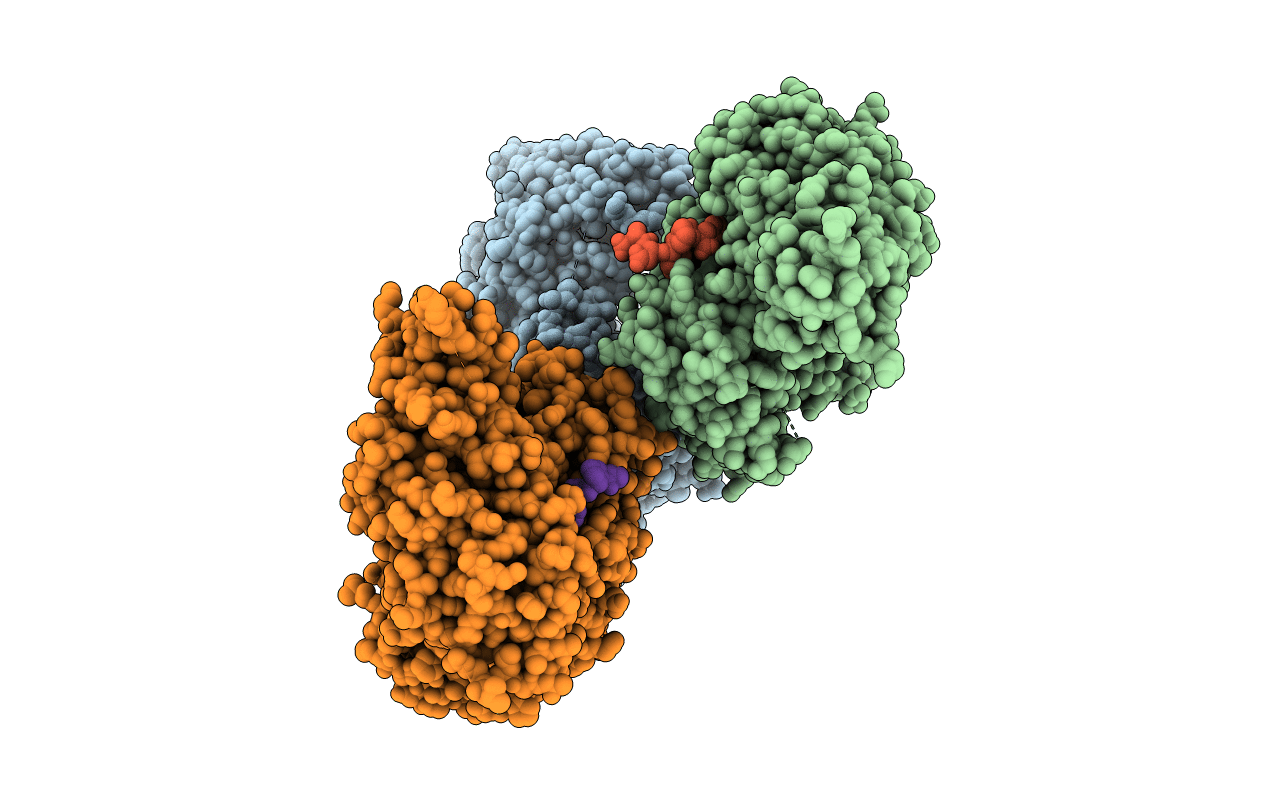
Deposition Date
2013-11-13
Release Date
2014-01-08
Last Version Date
2024-02-28
Entry Detail
PDB ID:
4NL8
Keywords:
Title:
PriA Helicase Bound to SSB C-terminal Tail Peptide
Biological Source:
Source Organism:
Klebsiella pneumoniae subsp. pneumoniae (Taxon ID: 1125630)
Klebsiella pneumoniae subsp. pneumoniae (Taxon ID: 272620)
Klebsiella pneumoniae subsp. pneumoniae (Taxon ID: 272620)
Host Organism:
Method Details:
Experimental Method:
Resolution:
4.08 Å
R-Value Free:
0.29
R-Value Work:
0.24
R-Value Observed:
0.24
Space Group:
P 21 21 21


